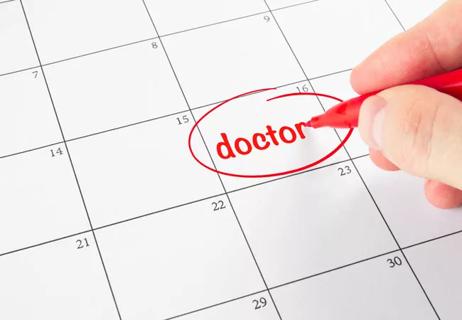Advertisement
Early intervention is crucial for impaired hearing

In a noisy world and with an aging population, hearing loss is an increasing concern. Early intervention is important. Here’s how to help your patients get the care they need.
Advertisement
Cleveland Clinic is a non-profit academic medical center. Advertising on our site helps support our mission. We do not endorse non-Cleveland Clinic products or services. Policy
Almost half of American adults 75 or older have impaired hearing, according to the National Institutes of Health. But hearing loss isn’t just a concern for geriatric patients. Fifteen percent of Americans aged 20 to 69 also suffer high-frequency hearing loss due to noise exposure at work or play. Yet the National Institute on Deafness and Other Communication Disorders estimates that only 1 in 5 people who could be helped by a hearing aid actually wears one.
“The emphasis for primary care physicians (PCPs) hopefully can be to prompt patients to have hearing evaluations sooner,” says Sarah Sydlowski, AuD, PhD, Audiology Director of the Hearing Implant Program in Cleveland Clinic’s Head & Neck Institute. “The earlier we can diagnose and manage the hearing loss, the better the outcome and the easier the transition to using amplification.” Some key points to consider:
Your patients may complain that people are mumbling or that they frequently ask speakers to repeat themselves. They may report the roaring, buzzing or ringing sensations of tinnitus, which can accompany hearing loss. They may avoid noisy rooms or social situations where many people talk at once. Family members may notice TV or radio volumes set unusually high, or may feel the person is withdrawing from activities they used to enjoy.
Certain chemotherapeutic agents and some drug classes, such as aminoglycosides and aspirin in high doses, can cause hearing loss. Baseline hearing evaluations, as well as monitoring after treatment begins, are important. Loud concerts and extended use of headphones and earbuds at high volume can degrade hearing at an early age. Your younger patients and their parents should be aware of the risks of amplified audio at volume settings greater than 50 percent of maximum, or for long duration, Dr. Sydlowski says, and of post-exposure warning signs such as tinnitus or muffled hearing. Headphones with volume limits and parental controls are available. Hunters, musicians and patients with occupational noise exposure are all at risk for noise-induced hearing loss. An audiologist can assist with customized earplugs.
Advertisement
Audiologists are master’s- or doctoral-level professionals trained in the assessment and management of hearing loss. They administer comprehensive evaluations, make recommendations for appropriate intervention such as hearing aids, and will make recommendations for further medical or surgical evaluation if needed.
Initial evaluation involves listening to tones through headphones at various intensities and frequencies to determine hearing thresholds, as well as tests to assess the patient’s ability to understand speech. More comprehensive evaluation, if needed, employs specialized tests to assess middle ear function, such as tympanometry or acoustic reflex testing. Behavioral evaluation can be tailored for children as young as 7 to 8 months; for babies younger than 6 months, electrophysiologic testing can indicate hearing sensitivity. If a hearing loss is identified, a hearing needs assessment will be scheduled.
Your patients may resist scheduling an evaluation or follow-up care because of the social stigma of hearing loss. They also may have outdated perceptions about assistive devices.
“They think they’re going to have big, clunky hearing aids like their grandfather wore,” Dr. Sydlowski says.
In fact, hearing aids have shrunk drastically while improving technologically. They are now more sophisticated while also simpler to use. They can selectively amplify missing sounds, detect and adjust to different acoustic environments, and wirelessly connect with cellphones, iPads and other devices for listening.
“The biggest obstacle to obtaining appropriate hearing care is often the patient’s hesitation to admit they have difficulty hearing,” Dr. Sydlowski says. “In fact, patients typically wait seven years on average before seeking management for their hearing loss. Primary care physicians are in a perfect position to advocate making hearing health and associated quality of life a priority for their patients.”
Advertisement
Advertisement

OMT may be right for some with Graves’ eye disease

Don’t skip the prevention conversation with your patients

ATHOS-3 subgroup analyses reveal compelling benefits

Many providers continue this non-evidence-based practice

Share this link with those concerned about brain disease

The clinical picture

Communication strategies to optimize patient care